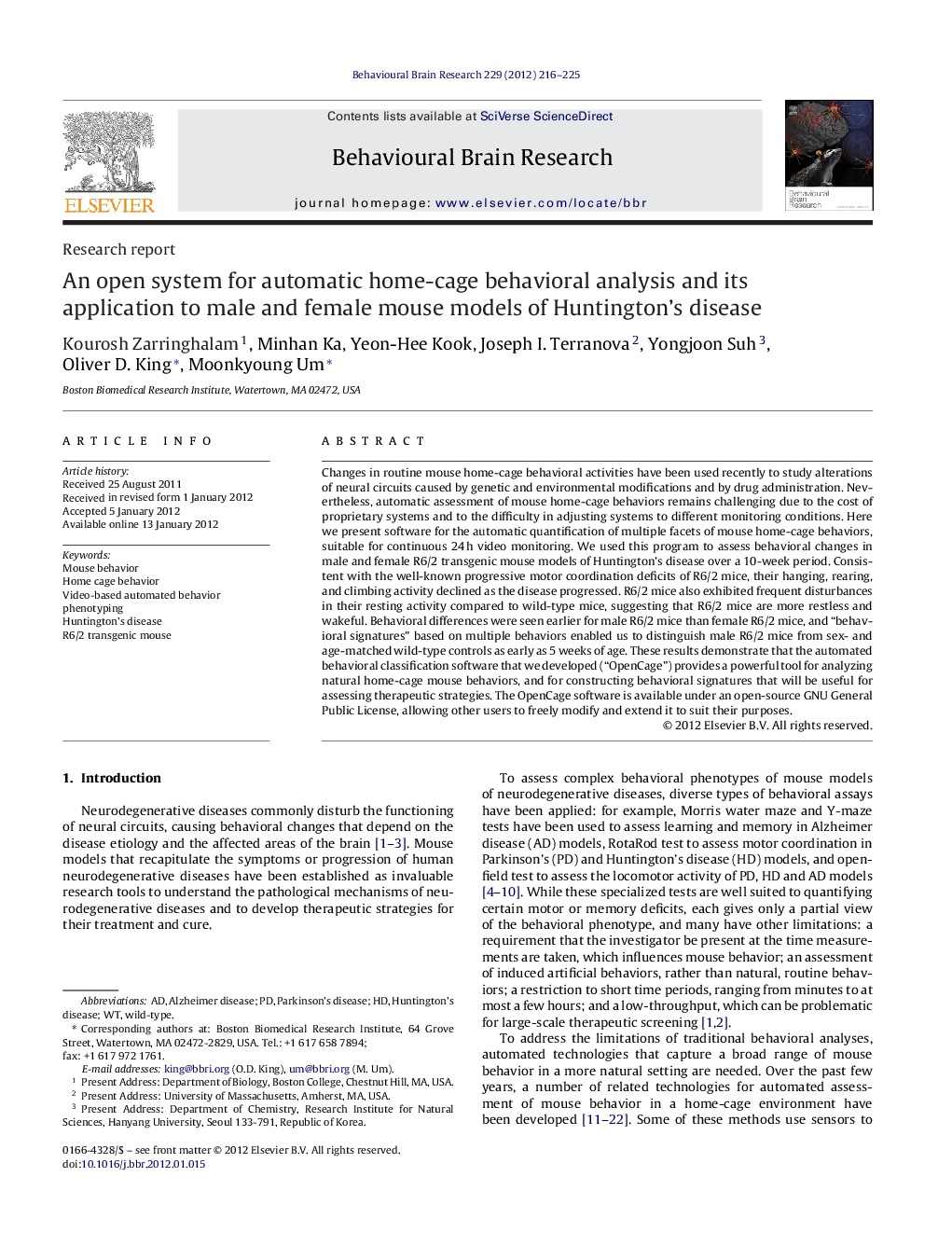| Article ID | Journal | Published Year | Pages | File Type |
|---|---|---|---|---|
| 4313365 | Behavioural Brain Research | 2012 | 10 Pages |
Changes in routine mouse home-cage behavioral activities have been used recently to study alterations of neural circuits caused by genetic and environmental modifications and by drug administration. Nevertheless, automatic assessment of mouse home-cage behaviors remains challenging due to the cost of proprietary systems and to the difficulty in adjusting systems to different monitoring conditions. Here we present software for the automatic quantification of multiple facets of mouse home-cage behaviors, suitable for continuous 24 h video monitoring. We used this program to assess behavioral changes in male and female R6/2 transgenic mouse models of Huntington's disease over a 10-week period. Consistent with the well-known progressive motor coordination deficits of R6/2 mice, their hanging, rearing, and climbing activity declined as the disease progressed. R6/2 mice also exhibited frequent disturbances in their resting activity compared to wild-type mice, suggesting that R6/2 mice are more restless and wakeful. Behavioral differences were seen earlier for male R6/2 mice than female R6/2 mice, and “behavioral signatures” based on multiple behaviors enabled us to distinguish male R6/2 mice from sex- and age-matched wild-type controls as early as 5 weeks of age. These results demonstrate that the automated behavioral classification software that we developed (“OpenCage”) provides a powerful tool for analyzing natural home-cage mouse behaviors, and for constructing behavioral signatures that will be useful for assessing therapeutic strategies. The OpenCage software is available under an open-source GNU General Public License, allowing other users to freely modify and extend it to suit their purposes.
► New software for automatic video-based classification of mouse home-cage behavior. ► Software available under open-source license, allowing free modification by users. ► Motor deficits and circadian disruptions detected in male and female R6/2 mice. ► Characteristic behavioral signatures defined based on multiple facets of behaviors. ► Behavioral signatures distinguished male R6/2 mice from WT as early as 5 weeks.
